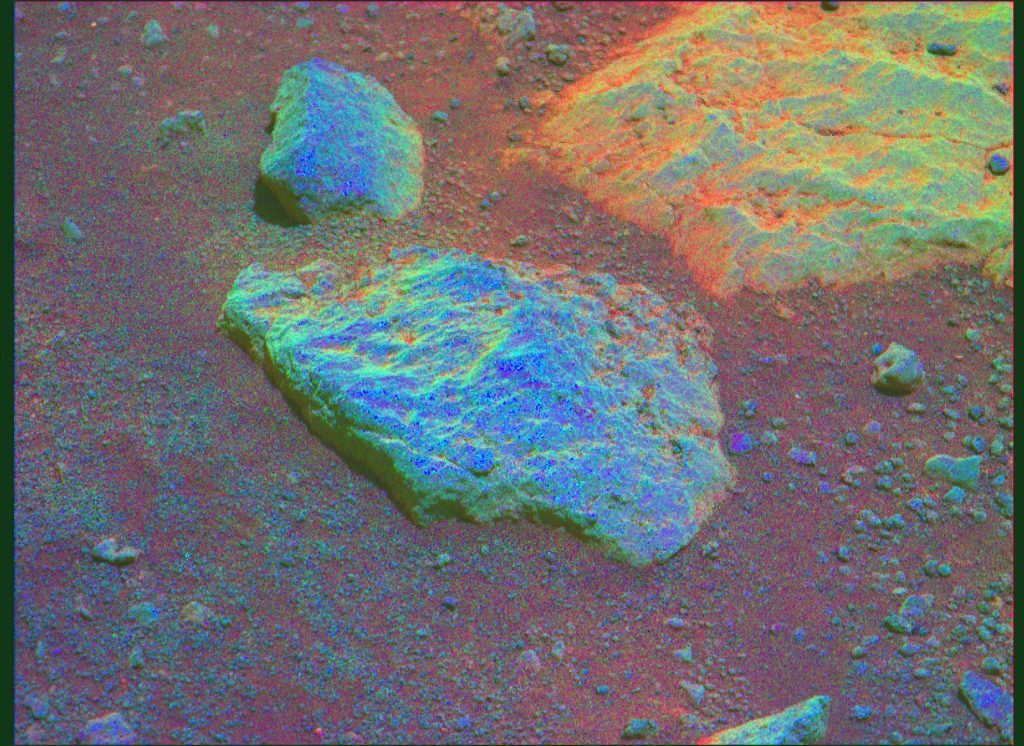
Technicolor Beavertail
Contributed by Michael Hansen and Jessica Kristensen
This image was taken on Sol 41 by Mastcam-Z in the largest zoom setting with focal length of 110 mm.
It is a false color image, a so-called decorrelation stretch*, which is a technique used by scientists to
more easily differentiate between features in the observed structures and materials. The way it works is
that three different wavelengths within the visible spectrum are selected and enhanced in contrast mathematically (a process we call “stretching”), effectively exaggerating the original colors. The wavelengths that are used for this decorrelation stretch are the same ones that typical human eyes are responsive to: 630 nm, 544 nm, and 480 nm, also known as RGB (red/green/blue) colors.
We chose this image to be our favorite, as it shows the color variations in the rocks and pebbles particularly well. The rock in the center, called ‘Beavertail’, was a target for the SuperCam laser, which has left a line of pits visible as
dark blue points.
*for more technical details on decorrelation stretching and other standard color enhancement methods in image processing, see Chapter 3 of “Remote Sensing of Landscapes with Spectral Images,” by J.B. Adams and A.R. Gillespie (Cambridge Univ. Press, 2010).
April 1, 2021